Best podcasting microphones 2025: my expert picks for every budget and level, including audio demos
Record your next pod’ or stream your heart out with the very best podcast mics, including my affordable recommendation under $100/£100
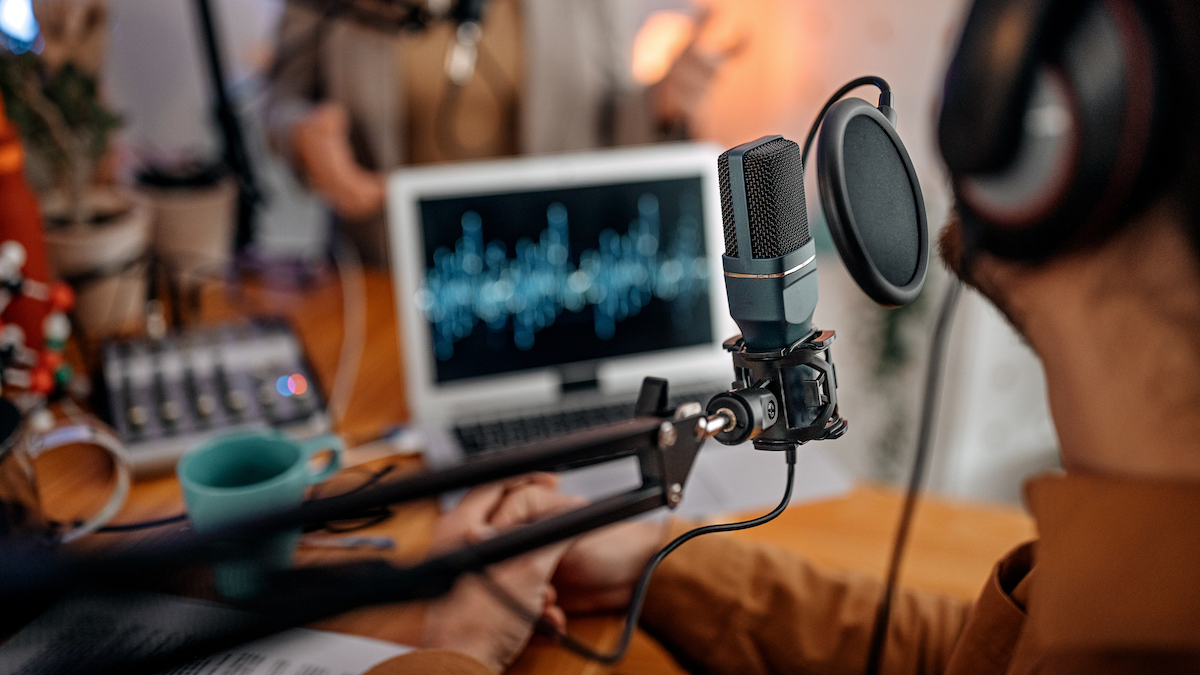
Depending on who you ask, the podcast is either the best or worst thing to happen to the internet. And no matter what side you fall on in that particular debate, you’re going to want to start your own. All joking aside, podcasting is an accessible, addictive and highly achievable way to get your voice heard; all you need is a handful of opinions, some guests worth talking to and one or more of the best podcasting microphones in this guide to capture it all with.
All you really need to get your podcast off the ground - besides engaging content with which to fill it - is a solid podcast mic, something to record it into (ie, a laptop or PC), and a way of editing the audio later like a DAW. For complete beginners, I'd recommend a plug-and-play USB microphones at the entry level that makes capturing your first episodes a breeze; if you’re after a little more production quality, there’s a world of broadcast-quality XLR microphones for you to discover.
I'm a professionla audio product tester and you’ll find microphones from both camps, and one or two that straddle them, in this guide, where I’ve aimed to test everything from budget options and mobile-friendly podcast microphones to pro level studio mics. Many of these microphones were personally tested by me in a variety of real-world scenarios, with a focus on voice recording, to ensure they're up to the task and worthy of recommendation. I’ve included an audio sample for each mic in this guide where possible, so you can get a real feel for what each mic is capable of and how they compare. You can find out more about how I recorded these demos here.
Right now, my top pick is the Shure MV7+. For me, it strikes the best balance between sounding great, is well built and designed to last. If you’re starting to get serious about podcasting, this is the mic for you.
My top picks
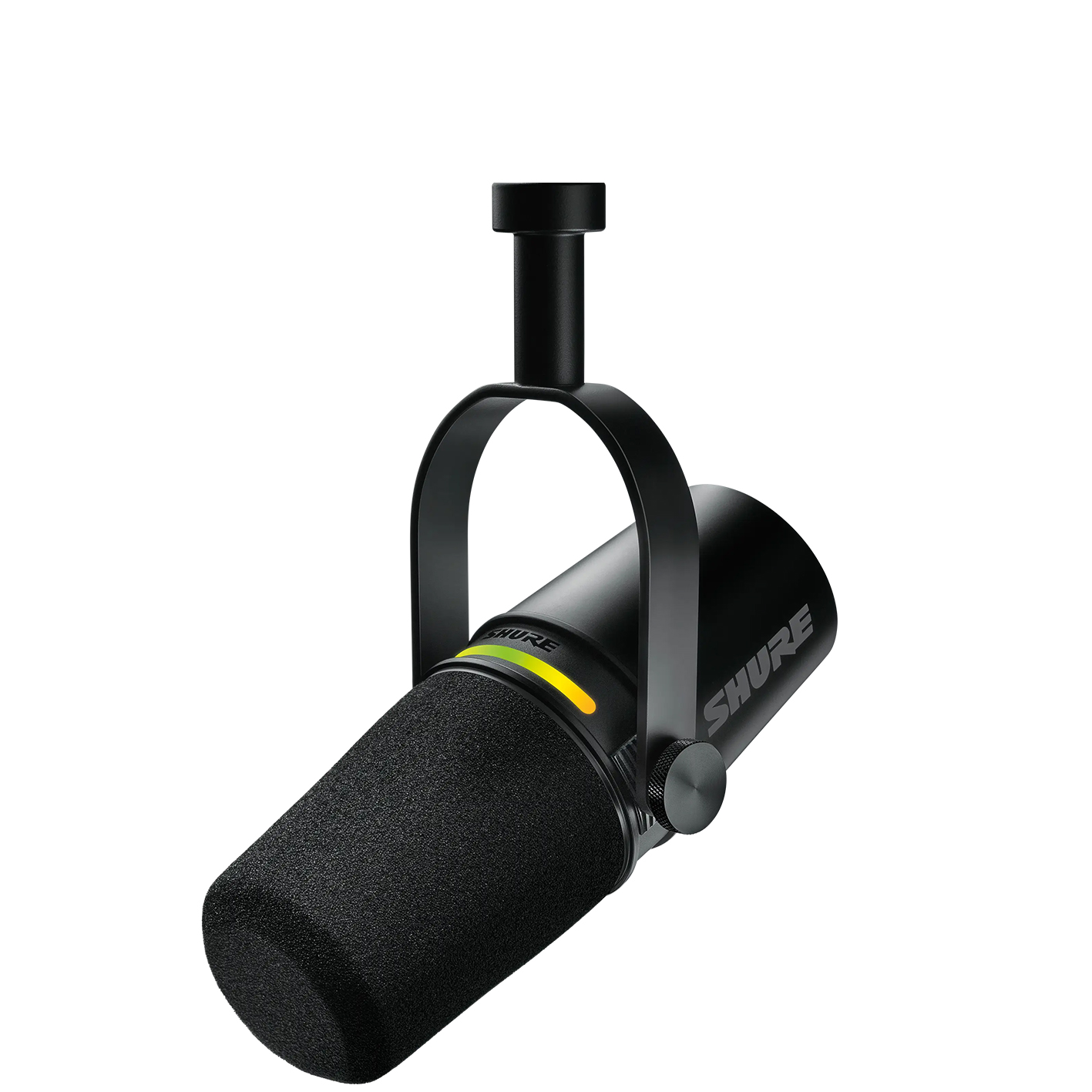
The MV7+ can function with both USB-C and XLR connections simultaneously, making it a versatile podcast mic for home recording or creating content on the go. We love the customisable multicolour LED touch panel for intuitive control over gain, monitoring levels and muting functions.
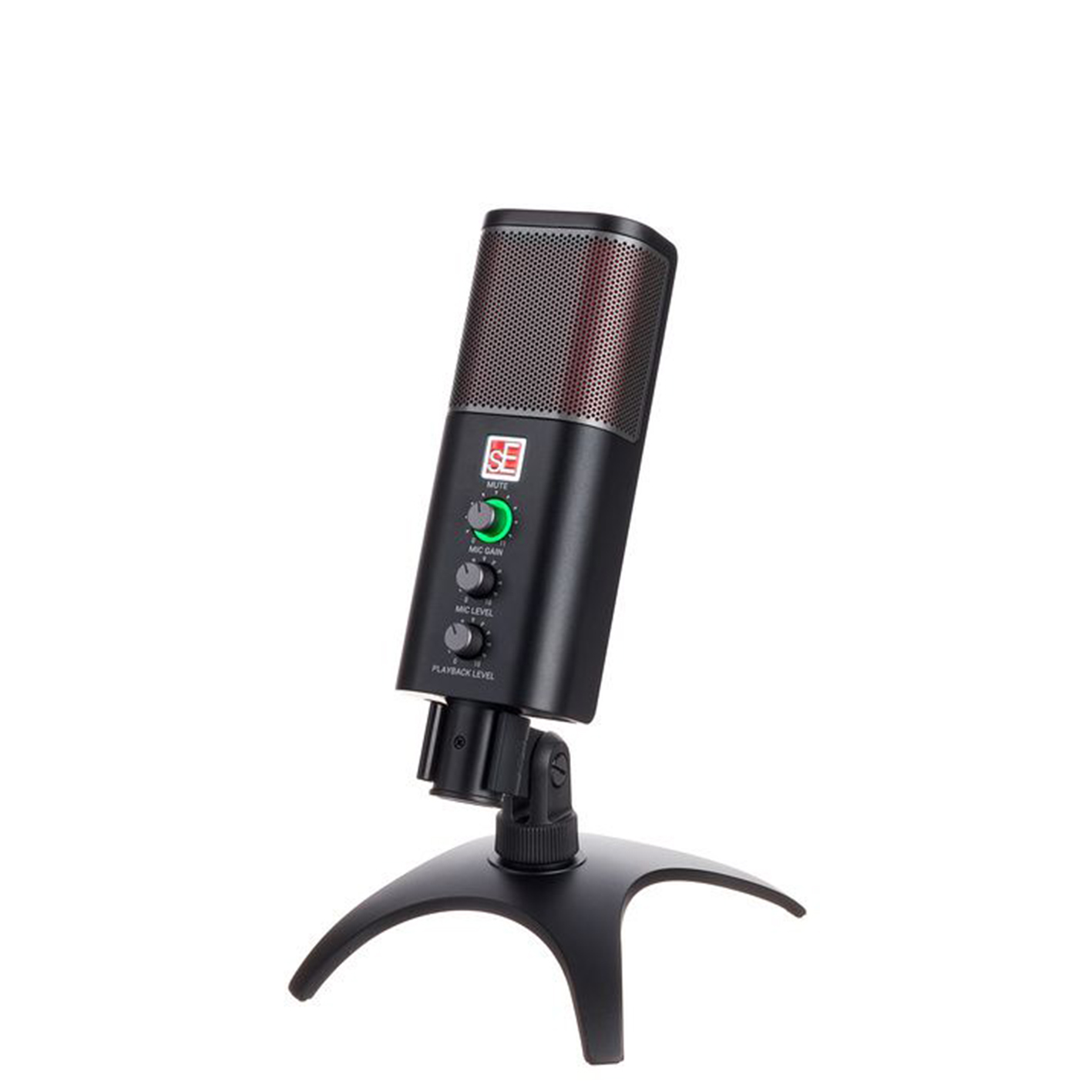
A refreshing option for anyone wanting top-notch sound in a simple, plug-and-play mic. The Neom combines high-quality audio with ease of use, making it a great companion for both beginners and experienced creators who don’t want to fuss with complex setups.
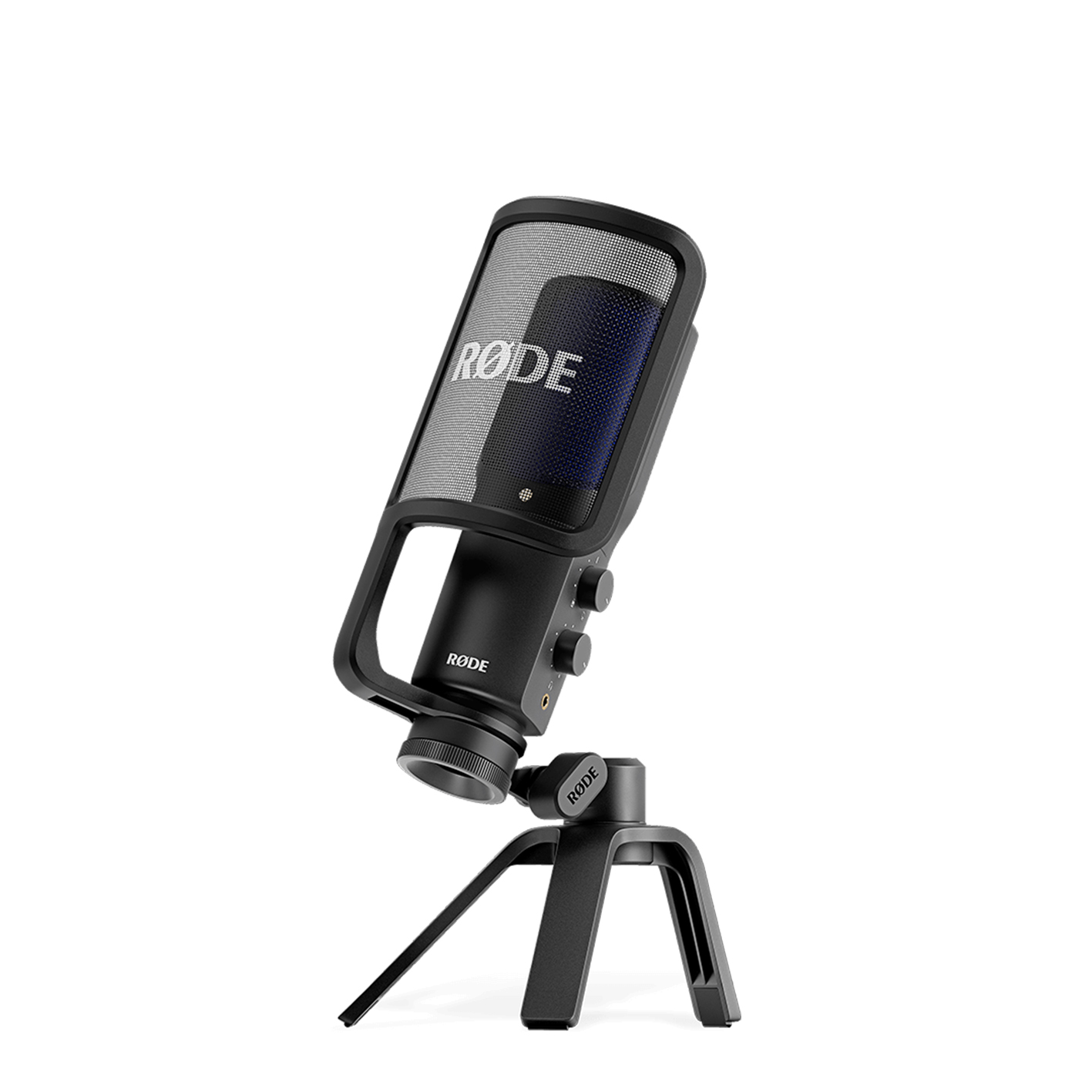
Rode’s NT-USB+ is an upgrade in every way - not just from its predecessor, but also on whichever entry-level podcast mic you were using first. With built-in Aphex processing, a crystal-clear high-gain preamp and a shedload of powerful ancillary apps, this is a powerful stepping-stone mic for upping your production value.
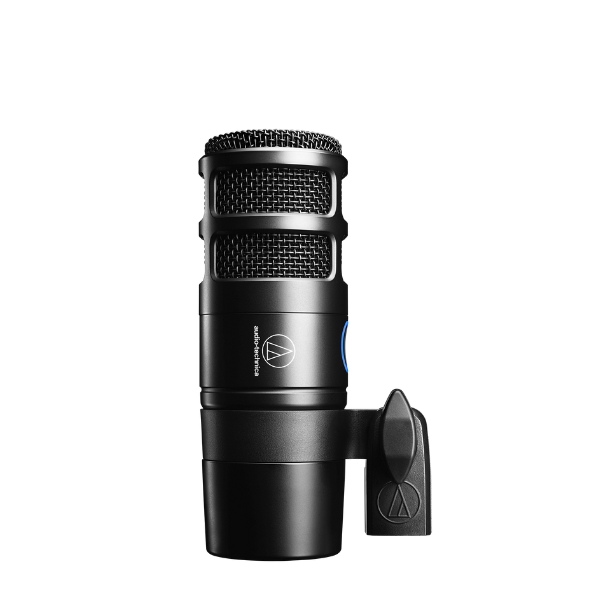
A brilliant all-in-one option for podcasters, streamers, and content creators in general, the Audio-Tecnica AT2040USB is a robustly built mic with excellent sound quality. Costing well below the $200 mark, it's superb value for money and gives you everything you need to start recording in one easy-to-use package.
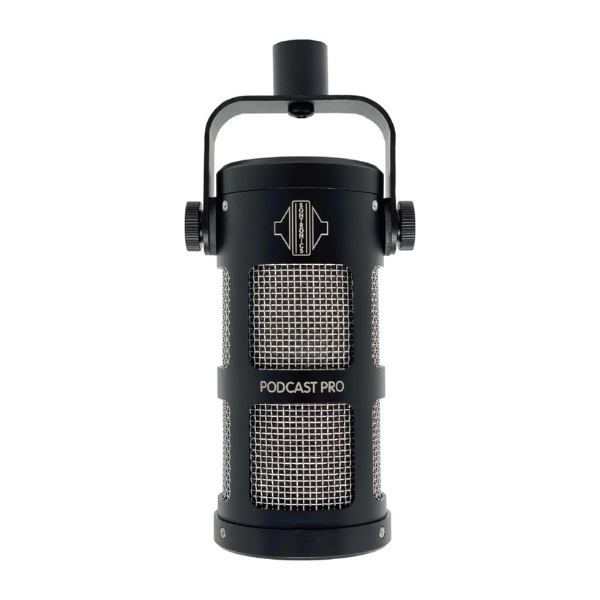
This unique-looking broadcast mic is designed and built in the UK, and is geared entirely towards the spoken word. In practice, its supercardioid pickup pattern does a great job at rejecting pretty much everything that isn’t spoken directly into it. It's reasonably priced, too.
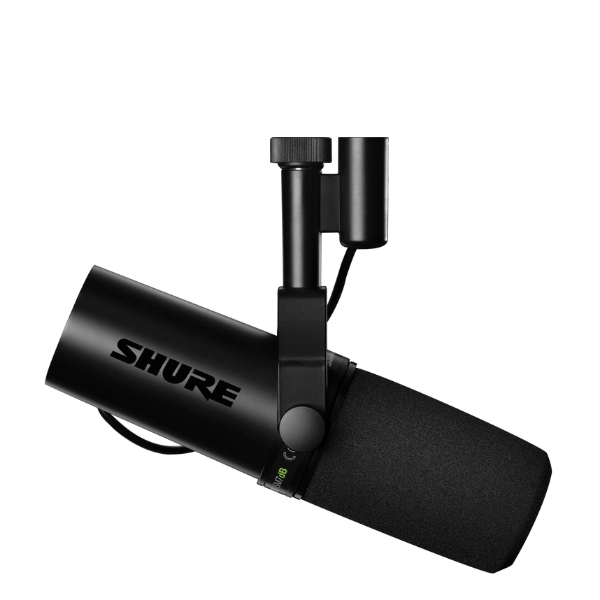
The SM7dB is an update to one of the most popular dynamic mics ever made. Often seen on streams, podcasts, and YouTube videos, this dynamic microphone is designed simply to deliver clean, clear audio. It handles loud environments very well, and the new built-in power amp overpowers its previous reputation for being quiet.
Best overall
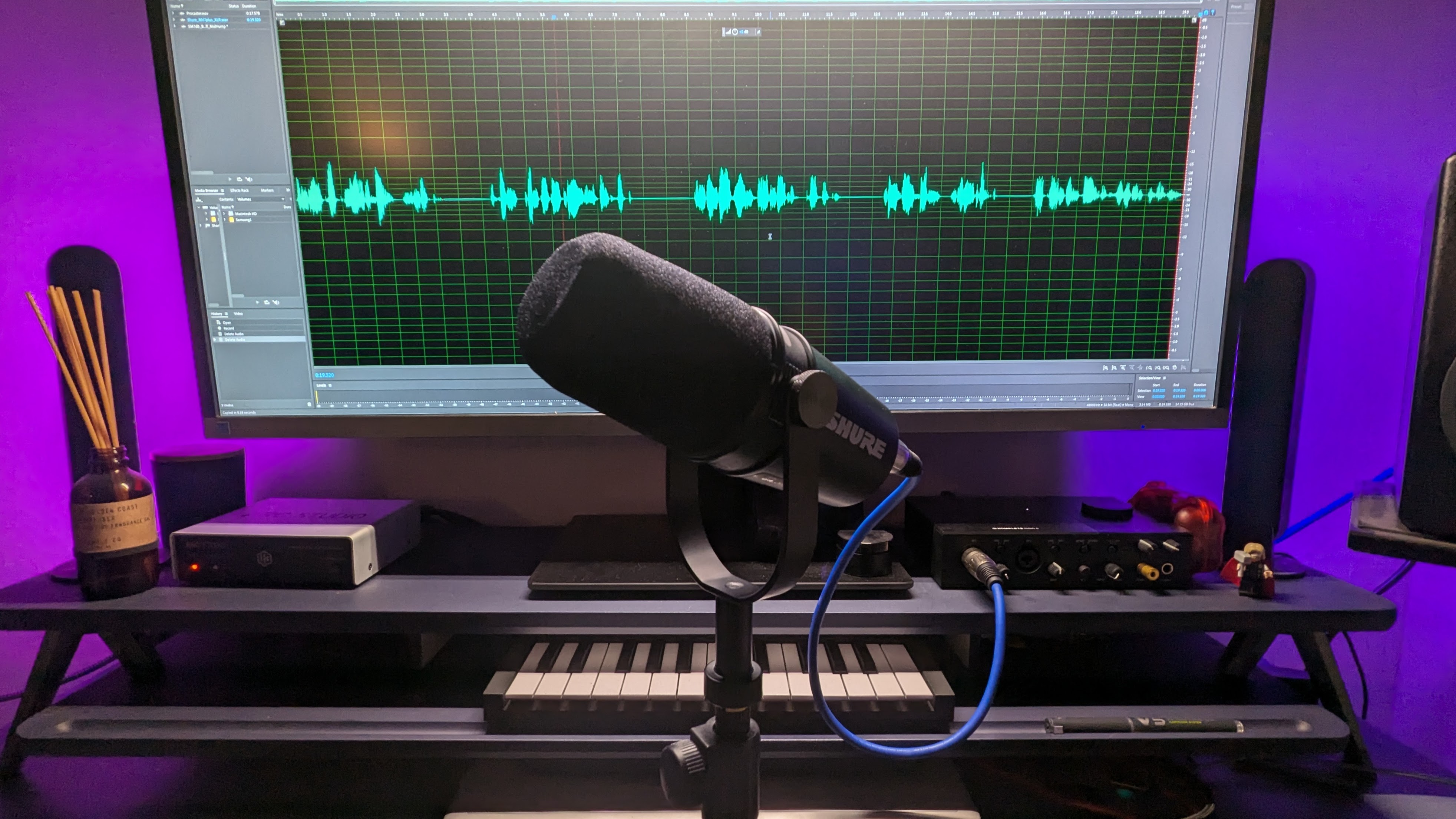
Specifications
Reasons to buy
Reasons to avoid
🎤 Someone who is ready to get serious about podcasting and needs a mic that sounds great, is versatile and built to last through years of use and abuse.
✅ Buy if you want the best mic available today: The MV7+ has quickly become the go-to mic for podcasters and streamers who value excellent audio.
❌ Avoid if you're on a strict beginner budget: Shure has a strong reputation and makes some of the best products out there, but that comes at a cost.
Look a little further down this list and you’ll see Shure’s latest SM7dB microphone, which is based on the venerable SM7B. It's a true powerhouse in the podcast world (and beyond), and worthy of the high levels of respect it gets. Not that you’ll catch Shure sitting on its hands, not when the podcasting landscape is changing as quickly as it is.
Which is why we've welcomed the Shure MV7+ into the fold, which takes everything good about its older brother and adds in a direct-to-computer USB-C connection. But do you want to know best thing of all? It can function with both methods - USB and XLR - simultaneously.
The versatility this offers makes the MV7+ a very exciting mic indeed. We found it to be equally at home being taken out with a laptop as a portable rig as it was taking centre stage in our home studio environment connected to a PC.
We particularly like the integrated DSP features which include real-time denoising, plus a digital pop filter which helped us capture super clear and professional-sounding audio, much of which was ready to use straight from the mic.
When you factor in compatibility with Shure’s excellent MOTIV app, which helps add some professional sheen to your recordings in real-time, you’ve got a package which is pretty hard to beat amongst all the options on this list.
Of course, you'll pay a little more for this level of quality, robustness and functionality, but in our experience, product at this level is worth the investment and will deliver more long-term performance.

"Finesses the original to deliver one of the most versatile, feature-laden mics for podcasting, streaming and recording."
Read more: Shure MV7+ review
Best for beginners
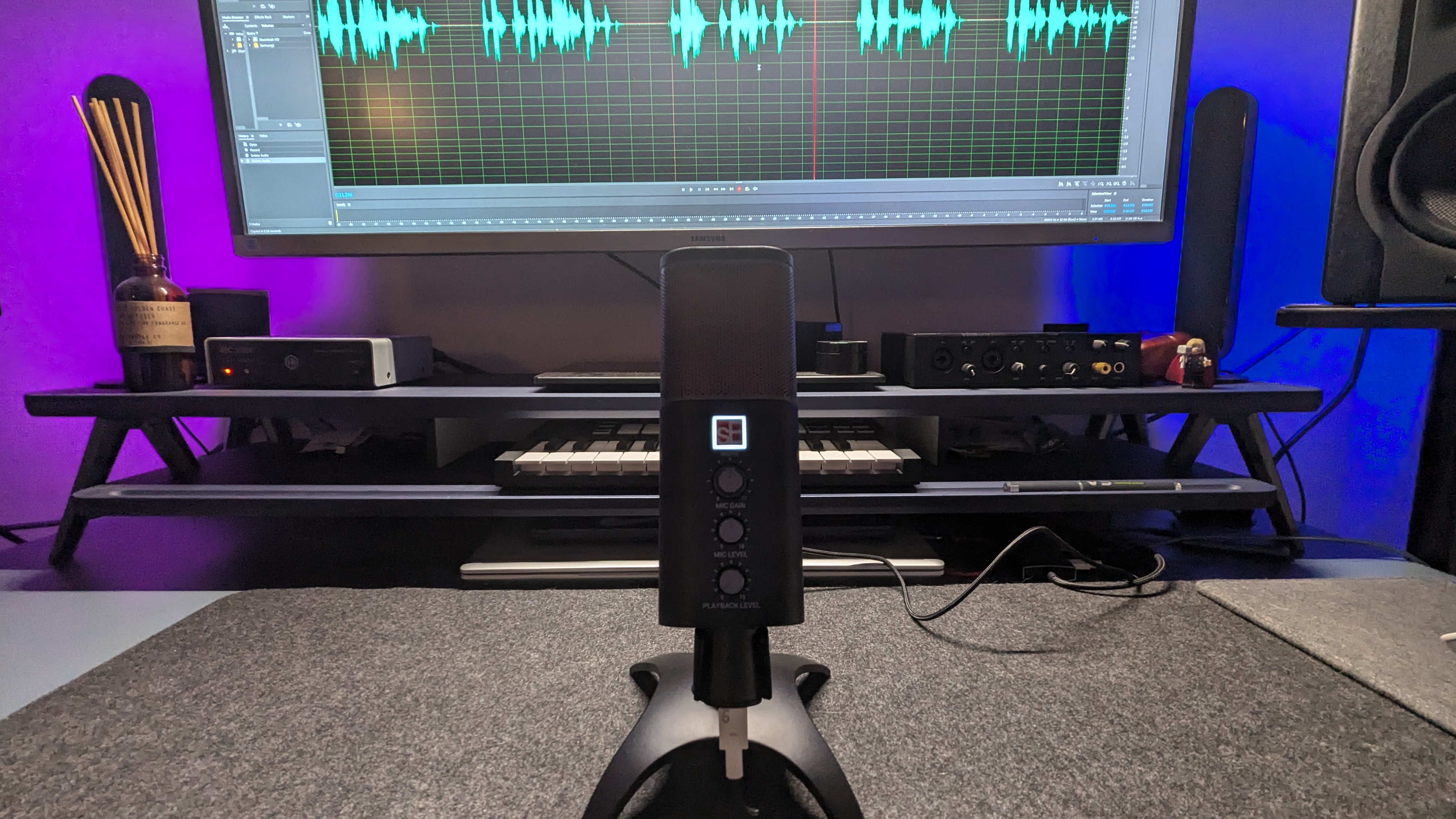
Specifications
Reasons to buy
Reasons to avoid
🎤 Total beginners looking for a clean sound from an easy to set up mic that doesn't overwhelm with features.
✅ Buy if you're just starting out: Newcomers to the world of podcasting will enjoy how easy this mic is to set up and operate.
❌ Avoid if you want a range of polar patterns: With only a single cardioid pattern available, you'll be slightly limited in what you can achieve with this mic.
The sE Electronics Neom is a refreshing option for anyone wanting top-notch sound in a simple, plug-and-play mic. The Neom combines high-quality audio with ease of use, making it a great companion for both beginners and experienced creators who don’t want to fuss with complex setups.
One of the Neom’s biggest draws is its robust, all-metal build, and its unique form factor which feels a cut above the other mics in the same price bracket. It’s got a cardioid polar pattern and a well-tuned condenser capsule, so it focuses well on your voice while reducing room noise. This is a big plus if you’re recording in a less-than-ideal space, like most home studios, where acoustic treatment isn’t always possible.
Sound-wise, the Neom is clear and warm, with enough detail to flatter spoken word and vocal recordings, though it may not have the depth that musicians might want for intricate acoustic work. For voice applications, however, it’s well worth a look.

"There’s a lot to like about the sE Neom, including its superb build quality and high fidelity recordings. It’s simple to use, and delivered great results across both speech and instrument recordings. For the price, it’s almost a no-brainer."
Read more: sE Electronics Neom review
Best upgrade
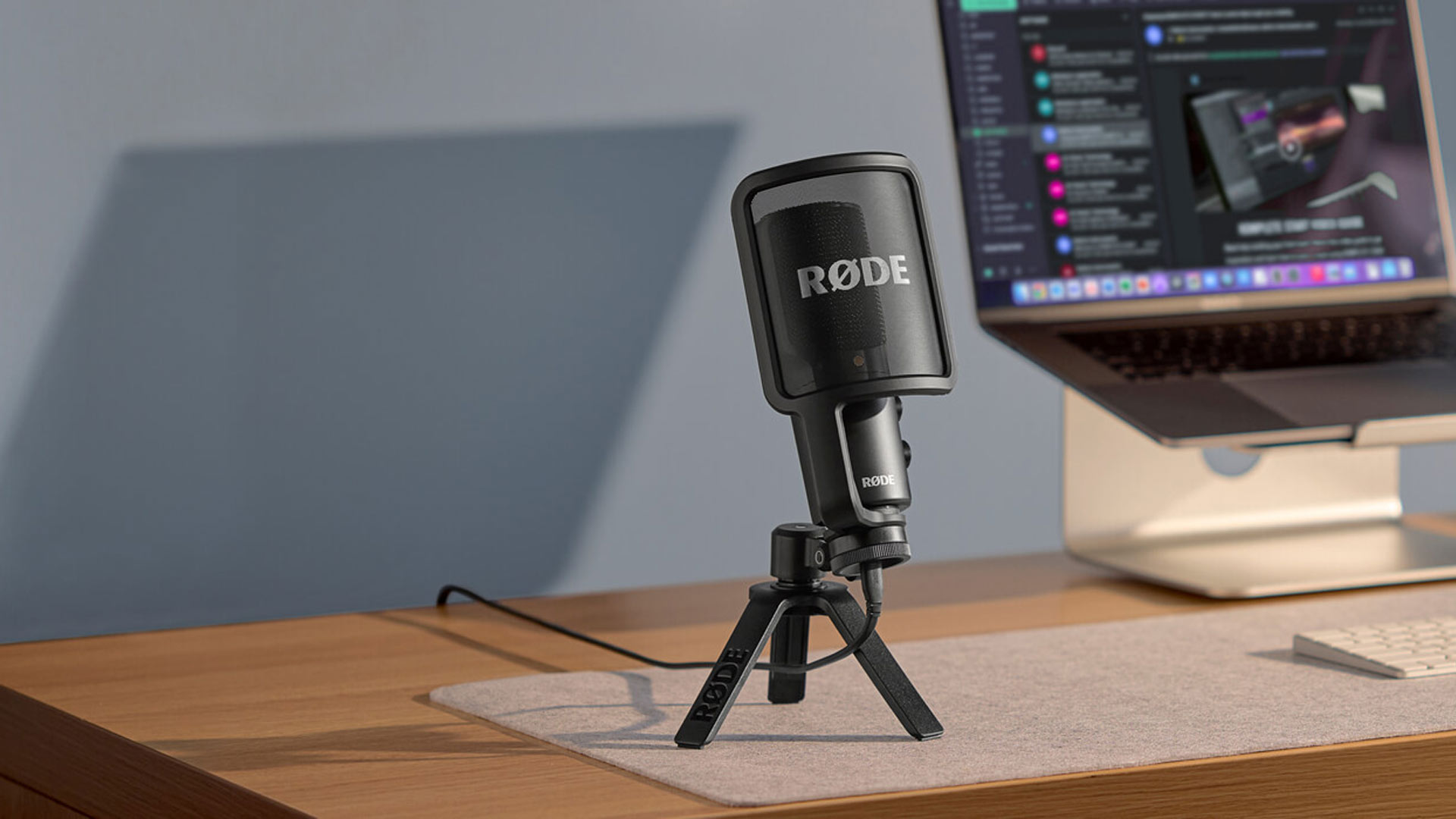
Specifications
Reasons to buy
Reasons to avoid
🎤 This is a step-up USB microphone for podcasters, streamers and content creators looking to level up their recording game, whether with built-in signal processing or a crystal-clear integrated preamp
✅ Buy if you want to get a step closer to radio-voice sonority: Onboard Aphex processing algorithms ape the brand’s famed Exciter and Big Bottom outboard effects, giving you more control over the respective crispness and boominess of your voice-for-radio.
❌ Avoid if you want to get more control over your podcast production: This is an excellent step-up for the plug-and-play-ers among us; if you want to get serious about your podcasting rig, the narrow scope of these built-in effects might not be the education you’re looking for.
Rode is an audio-engineering mainstay, with major thanks to its industry-standard studio and broadcast microphones; it’s also an absolute winner in the budget-price arena, bringing trademark precision to a figurative shelf that most anyone can reach. I found their first USB microphone, the Rode NT-USB, to be both phenomenally clear and phenomenally easy-to-use; its successor, the Rode NT-USB+, is even better in many ways.
The Rode NT-USB+ has some dramatically-improved specs, the most alluring of which is, in my humble opinion, the addition of onboard Aphex processing technology. Using the Rode Central app, you can apply some clever treble-enhancing or ‘big bottom’ action to your voice, and get a whole lot closer to the pleasing crisp-yet-sonorous character of your favourite podcast productions.
The NT-USB was already astonishingly quiet for its price, but the NT-USB+ improves further - with both a higher bit resolution and a new high-gain preamp circuit. The result is a level of clarity you wouldn’t expect to achieve for less than $/£200. Throw in the onboard headphone monitoring and free-to-use Rode podcasting apps, and you have a strong step-up ecosystem for improving your output. And it comes with a free pop-shield too. Woohoo!
Best on a budget

Specifications
Reasons to buy
Reasons to avoid
🎤 Someone new to podcasting or streaming who needs a reliable mic that does a lot of the audio heavy-lifting for them.
✅ Buy if you want quality on a budget: This is a well-built mic that sounds great and doesn't cost a huge amount of money, coming in well below the $200 mark.
❌ Avoid if you need a mic for more than podcasting: This isn't the most versatile mic, so if you need a tool for more than just speech applications, look elsewhere.
The Audio Technica AT2040USB is a cheap microphone that's great for budding podcasters or those who spend all their budget on guests or their set. Coming in well below the $200 mark, it delivers superb audio quality and a robust build that makes it superb value for money.
From the moment I picked up the AT2040USB it felt like a proper studio mic with a robust metal casing and good weight to it. It's the sort of mic that'll do more damage to whatever you drop it on than it'll sustain itself.
This does admittedly make it a little heavy for use on the go, and it may also pull on cheaper mic stands depending on how far you need to stretch, but that's a small price to pay for something that will obviously last a long time.
Using it is an absolute breeze, simply plug the generously long USB-C cable directly into your laptop and you should be good to go. On my MacBook, it was picked up instantly and ready for use, although on Windows you might need the additional software and driver to get it working immediately.
The audio quality is surprisingly good considering it's a budget USB mic. It delivers a warm and rich sound to spoken word, and the dedicated low switch is handy for eliminating any low-end rumble. You will get a little proximity effect if you're too close to it, and for those with particularly harsh plosive sound, an additional pop filter might be required to really smooth them out.
Add in a budget audio interface and you'll have a super cheap podcasting rig capable of producing high-quality spoken word.

"Whether you’re streaming, vlogging, or podcasting, or even moonlighting as a voiceover artist on a budget, the Audio-Technica AT2040USB is a seriously impressive microphone. Its use outside that scope might be limited (although it would cope pretty well with loud guitar amp cabinets we’d wager) but as a specialist mic, this one is easy to recommend."
Read more: Audio-Technica AT2040USB
Best sounding mic
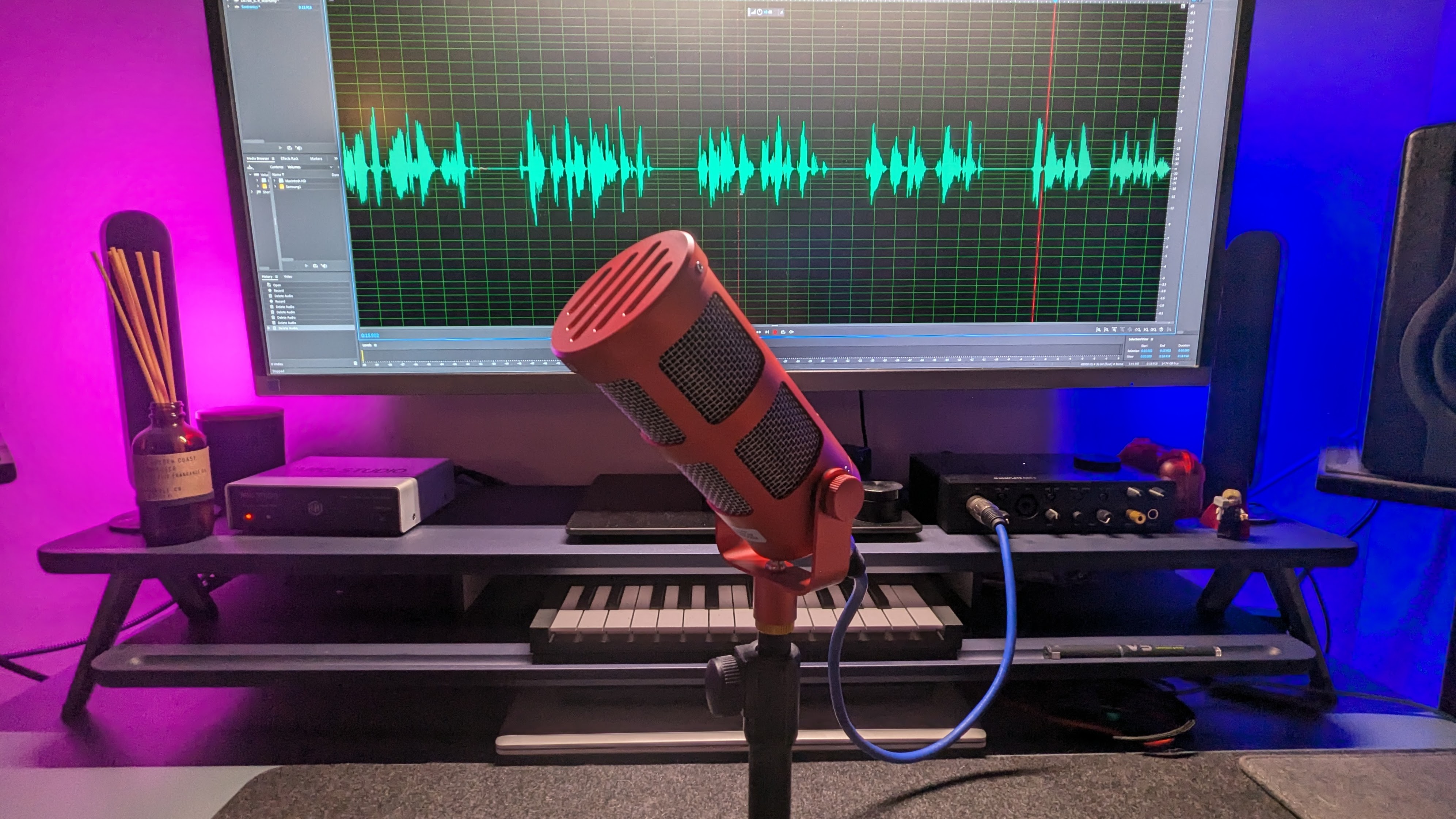
Specifications
Reasons to buy
Reasons to avoid
🎤 If sound is your number one priority, there are very few alternative mics that will deliver for the price.
✅ Buy if you want something that stands out: We love the vintage styling and colour options you get with this mic. It certainly beats the big slabs of black you see on most podcasts.
❌ Avoid if you want to record more than one voice: The Sontronics Solo is best as a single voice mic. You'll need multiples if you're going to invite guests on your pod.
Launched in early 2020, the Sontronics Podcast Pro is a dynamic microphone which has, as you may have worked out from the name, the world of speech recording in mind.
This unique-looking broadcast mic is designed and built in the UK, and is geared entirely towards the spoken word. In practice, we found its supercardioid pickup pattern did a great job at rejecting pretty much everything that wasn’t spoken directly into it, although this does work against it when trying to record multiple voices at once.
With many podcasts now doubling up and offering video alongside the traditional audio, you could do a lot worse than inviting one of these stylish mics into your studio. There’s substance to its charms too, however, and it comes at a very reasonable price.

"The Podcast Pro is a great value, stylish home-broadcasting mic that also holds its own for simple home studio duties."
Read more: Sontronics Podcast Pro review
Best for pros
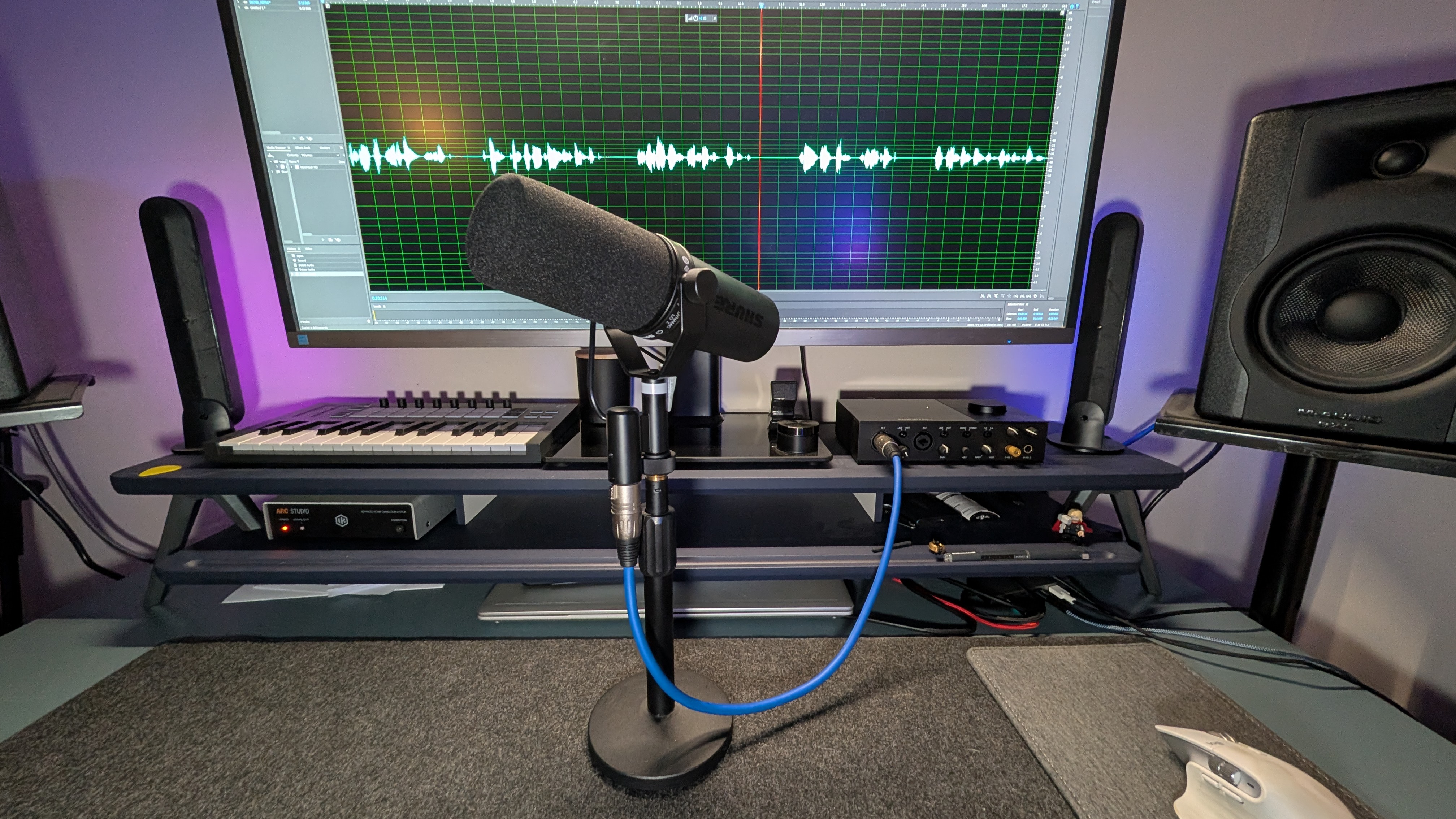
Specifications
Reasons to buy
Reasons to avoid
🎤 If you want a mic that can capture a range of voice applications, from podcasting to pristine sung vocals, this is the one.
✅ Buy if you want a pro mic for all voice applications: From recording podcasts to singing, this mic will produce beautiful results every time.
❌ Avoid if you have a limited budget: This is the priciest mic on this list, for good reason. But if you only intend to record pods this mic is overkill.
If you've ever been in a recording studio, or ever watched a band play live, you'll have seen Shure microphones. Simply put, they are the standard against which all other recording microphones are judged. The Shure SM7dB adds to this reputation by doing one thing really, really well: making the audio it records sound brilliant.
This dynamic microphone is designed simply to deliver clean, clear audio, and thanks to a new active preamp, it's got more than enough headroom now to offset its previous reputation of being quiet. As one of the only dynamic mics on the list, we should point out the ease with which the SM7B copes with loud environments too.
It's the flat frequency response we were most taken with during our tests, though; essentially, none of the frequencies it receives are emphasised in any way. This means that when you come to process the audio - e.g. add compression, EQ - it sounds as natural as when it was recorded. A top-tier microphone, no two ways about it.

"For anyone upgrading an existing mic, there are few models on the market today we’d recommend more highly than the SM7dB. We’d even recommend it for existing SM7B users, who will benefit greatly from the added flexibility that comes with the active preamp."
Read more: Shure SM7dB review
Podcast royalty
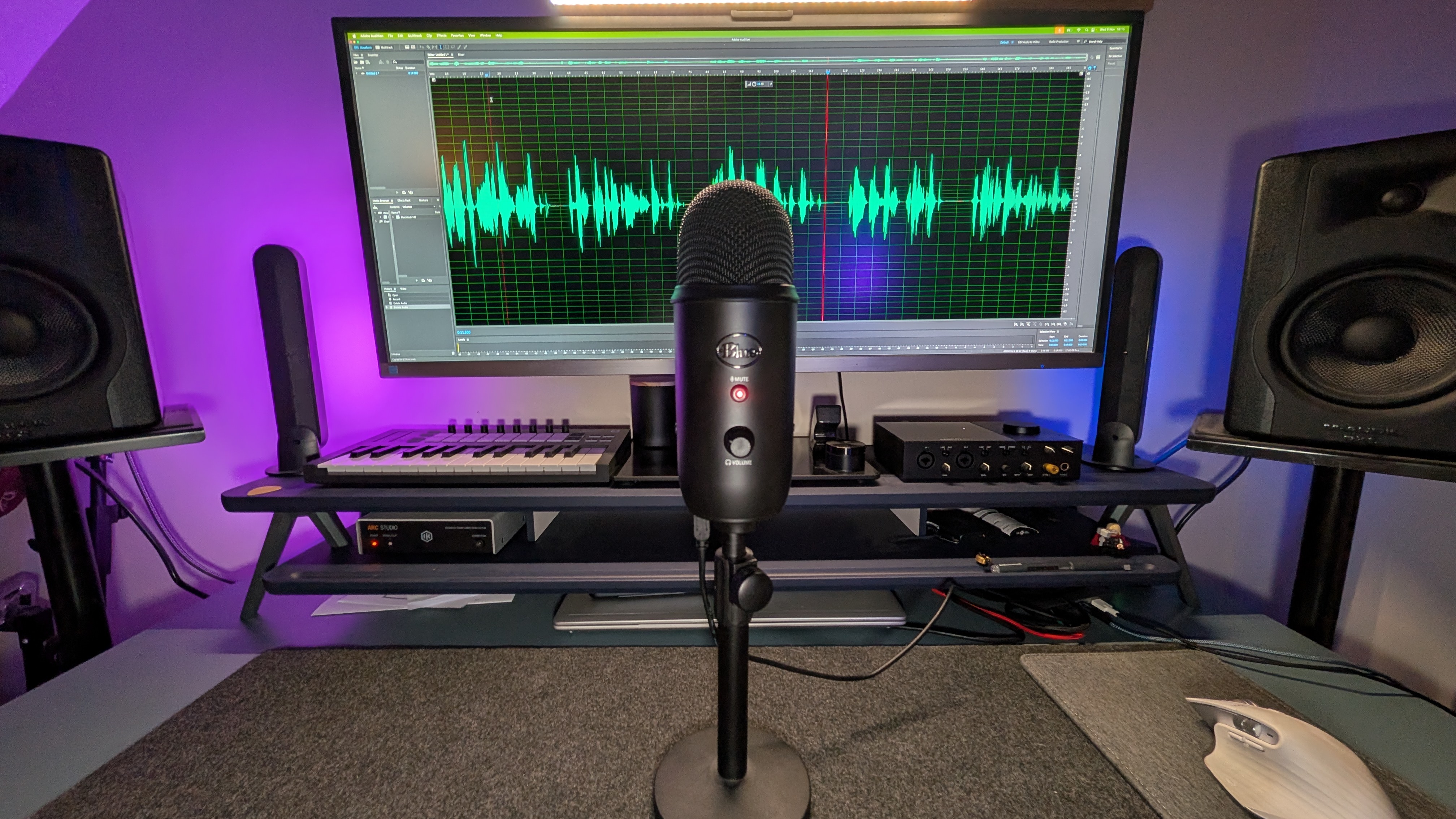
Specifications
Reasons to buy
Reasons to avoid
🎤 Podcasters who want a mic that has been tried and tested for years in the streaming and podcasting space. If you've consume online content you have 100% heard or seen a Blue Yeti.
✅ Buy if you want a tried and trusted option: One of the ones that started it all, the Blue Yeti is still one of the best value and most versatile mics there is.
❌ Avoid if you need an XLR connection: This one is USB-only, so if you need XLR - or the choice between USB or XLR - you will need to explore other options in this guide.
The Blue Yeti has become synonymous with a number of different applications. From Twitch gaming to YouTube tutorials, this mic is perhaps the best known and most-recognisable out there, and for good reason. In our tests we found it easy to use, it sounds superb thanks to its three condenser capsules, and doesn't cost the earth.
The multiple pattern selection feature is particularly neat. You can choose to either have the mic pick up the sound being directed straight into it, which is great for podcasting, or you can set it to pick up audio from a wider angle. This makes it the perfect choice for recording group sessions, where a single mic is placed in the middle of a table.
Over time, Blue has expanded its range to include higher-spec models capable of dual USB/XLR output (Blue Yeti Pro), a smaller scale version (Blue Yeti Nano), and even a model with functionality specific to game streamers (Blue Yeti X). And that's our only real gripe with the standard Blue Yeti - if you need an XLR connection you'll need to fork out more for the Blue Yeti Pro which is currently $120/£130 more than the standard Yeti. That's said, whatever your creative requirements, you'll find a Yeti to suit you.

"For podcasting, streaming and video conferencing, the Blue Yeti is still as simple and easy to use as ever. Highly recommended."
Read more: Blue Microphones Yeti review
Best for durability
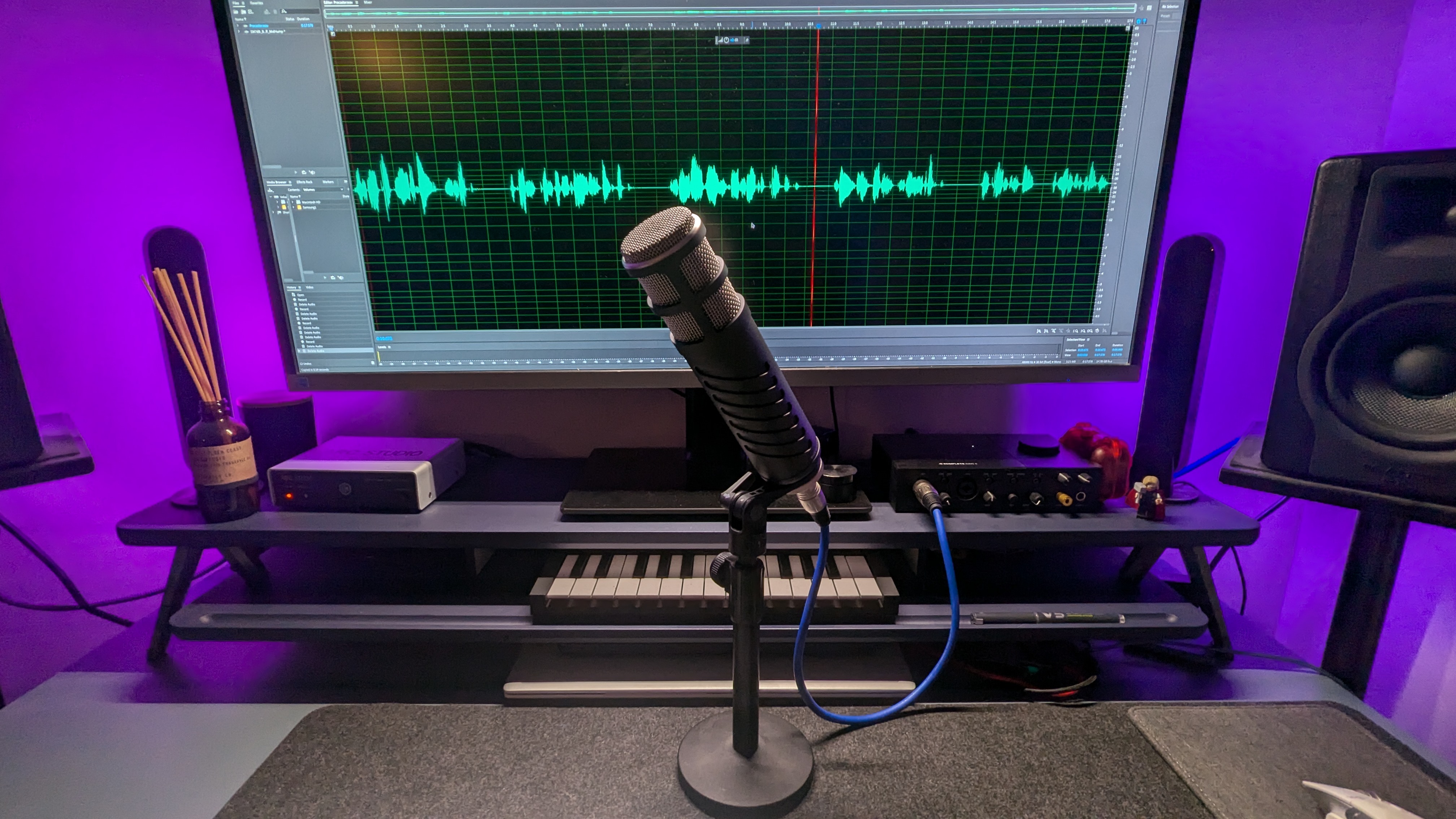
Specifications
Reasons to buy
Reasons to avoid
🎤 Podcasters who need brawn as well as audio performance. This is one burly mic that will take whatever you can throw at it (literally).
✅ Buy if you want a mic that will last: This mic feels incredibly solid in the hand and has a reassuring weight to it. If you're playing the long game, this is your next mic.
❌ Avoid if you have an entry-level interface: A quality interface with decent preamps will give you more control over the mic and the resulting sound. Less so if your interface doesn't pass muster.
Some of the mics on this list are equally happy recording vocals, guitars, streams or Skype chats. Not so, the Rode Procaster. The first of two Rode mics on this list is a vocal mic, and more specifically for speech. It’s pitched as a broadcast microphone, which means it could feasibly be used for TV, radio or other high-pressure situations.
From our tests we found the way the Procaster copes with ambient noise was the real stand out; its tight polar pattern means that no matter how noisy the environment, what you record will sound extremely focused and clear.
In practice, we found the mic to have a pleasing weight to it; enough that you'd definitely want a desktop mic stand on hand for longer sessions, but also robust enough that you know it will withstand years of recording.

"The Rode Procaster impressed us. For podcasting, voice-over work, or any other speech-driven medium, this is a microphone we’re happy to recommend."
Read more: Rode Procaster review
Best do-it-all mic
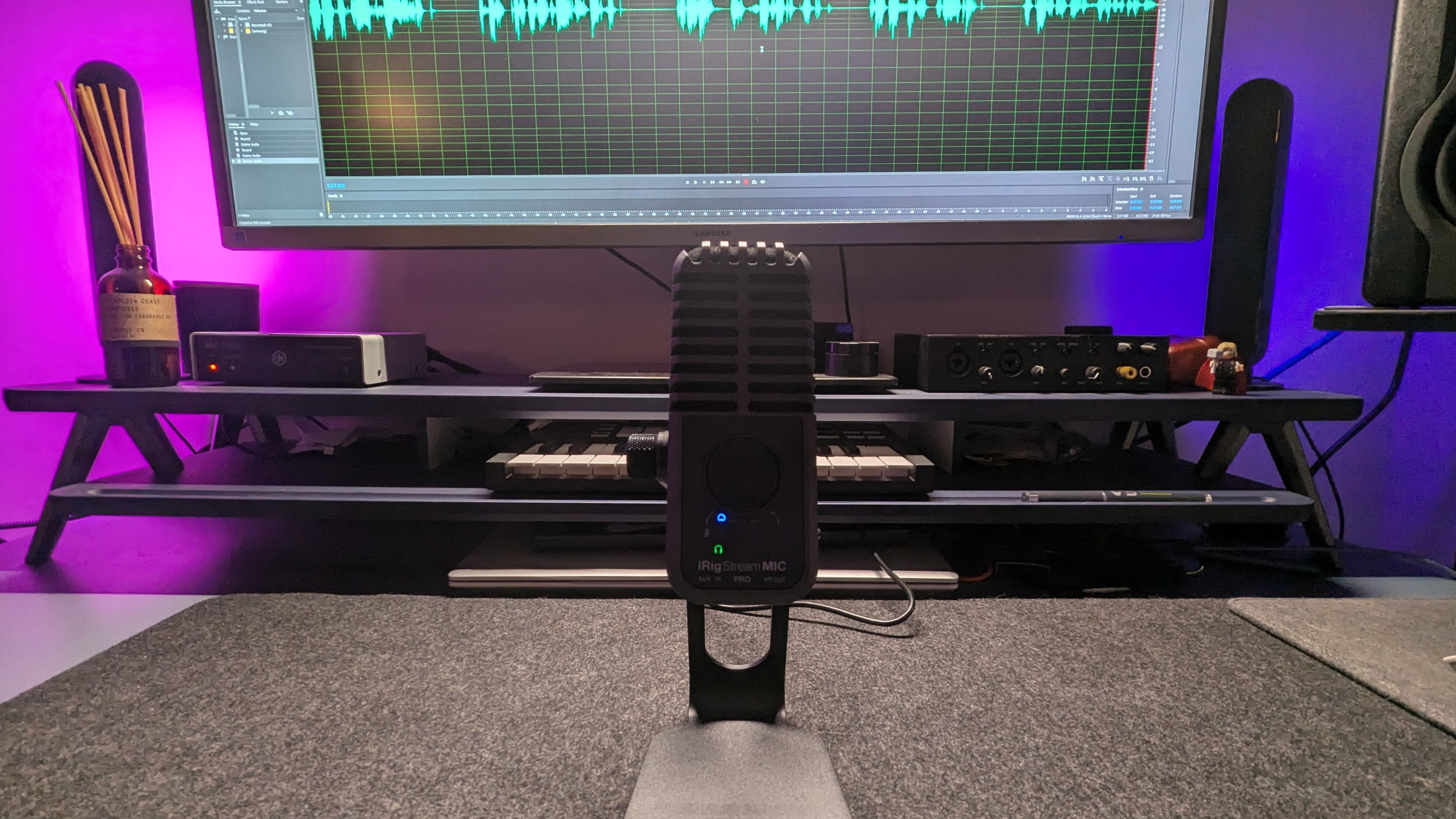
Specifications
Reasons to buy
Reasons to avoid
🎤 Podcasters and streamers who need an audio interface built-in
✅ Buy if you want an all-in-one mic: The iRig Stream Mic Pro has an audio interface built in, so you're ready to record straight from the box.
❌ Avoid if you want a rugged mic: This isn't the most sturdy-feeling mic we've tested. Look elsewhere if you're heavy-handed or regularly on the go.
We’re big fans of equipment that can carry out more than one function. IK Multimedia are the masters of finding new and innovative ways of increasing the capabilities and tricks their products offer, and the iRig Stream Mic Pro is a great example. Combining a dual-capsule condenser mic - with four different pickup patterns - with a 2 in/4 out audio interface for connecting different sound sources and outputs, means you really only need this device and you’re up and running.
We found the audio interface, in particular, to be nicely thought out, with loopback functionality meaning you can route audio from different applications internally. You might, for example, want to stream an Ableton Live session but find Windows doesn’t play nicely with multiple sound sources. Loopback is your friend here.
As with IK’s other gear, the iRig Stream Mic Pro is designed with portability in mind and full cooperation with the smartphones and tablets in your lives, making for a superb value, highly versatile mic which will suit a variety of different use cases.

"With so much in the way of options when it comes to USB microphones, it can be hard to decide which one is right for you. All we can say is that for streamers looking for a compact, all-in-one device that will take care of everything, without breaking the bank, the IK iRig Stream Mic Pro is pretty hard to beat."
Read more: IK Multimedia iRig Stream Mic Pro review
Best beginner XLR
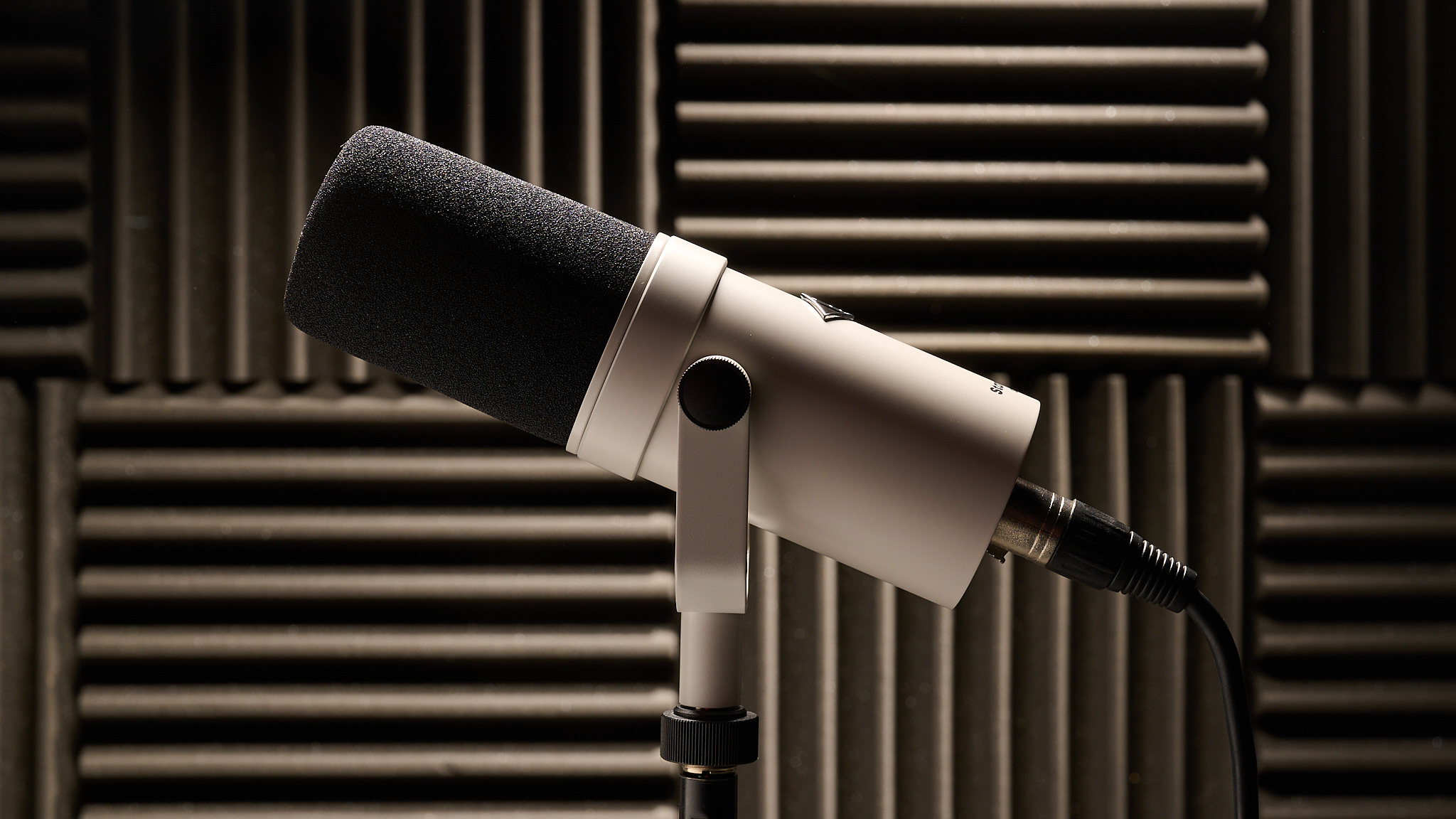
Specifications
Reasons to buy
Reasons to avoid
🎤 People who want to sound like their favourite podcaster, but for half the price of a Shure SM7B.
✅ Buy if you want That Podcast Sound for cheap: The SD-1 takes some clear cues from an industry staple, both aesthetically and sonically.
❌ Avoid if you don’t already own some decent audio gear: This is not only an XLR-only microphone, but one that requires more preamp gain than most; don’t buy unless you’ve a decent audio interface to interface it with!
Universal Audio is everywhere. Audio interfaces, quintessential studio outboard effects, more VST plug-ins than you could shake a stick at – and, of course, microphones, all benefiting from a unique and genius approach to digital modelling. This is the Universal Audio SD-1, a dynamic microphone with a very familiar design.
The SD-1, of course, takes after the Shure SM7B, a podcasting mainstay thanks to its sonorous proximity effect and generous handling of high SPL. But there’s more going on here than just the best form of flattery; Universal Audio has crammed the SD-1 with its Hemisphere dynamic modelling tech, enabling you to benefit from the character of five different famed microphone profiles - including SM7B, naturally, and an RE20-style microphone (another broadcasting fave).
In practice, the SD-1 is an intuitive mic – with some expressive and highly useful on-board switches for low-cut and “articulation boost” aimed at enhancing vocals. This is a true workhorse dynamic for vocals, even if you choose to ignore the other mic sound profiles on offer. Bear in mind, though, that its similarities with the famed SM7B don’t stop at output volume; you’ll want a decent preamp to get the most out of this incredibly-priced podcast-friendly dynamic.

"The Universal Audio SD-1 is a versatile, durable dynamic microphone offering natural sound for various applications from a trusted name in music tech, though it requires substantial preamp gain to truly shine."
Read more: Universal Audio SD-1 review
Spec comparison
Want a clearer look at how each of our favourite mics stack up against each other? Here's all the key spec side-by-side:
Mic | Launch price | Type | Connection | Polar pattern | Freq. response | Max SPL | Sensitivity | A/D resolution | Low cut? | Extras |
|---|---|---|---|---|---|---|---|---|---|---|
Shure MV7+ | $279/£269 | Dynamic | USB, XLR | Cardioid | N/A | 128dB | -55 dBV/Pa | 24-bit/48kHz | No | USB-C to USB-C cable |
sE Electronics Neom | $99/£109 | Condenser | USB | Cardioid | 20Hz-20kHz | N/A | N/A | 24-bit/192kHz | No | USB-C to USB-A cable |
Rode NT-USB+ | $179/£159 | Condenser | USB | Cardioid | 20Hz-20kHz | 97dB | N/A | 24-bit/48kHz | No | Desktop stand, pop filter |
Audio-Technica AT2040USB | $159/£129 | Dynamic | USB | Hypercardioid | 80Hz-16kHz | N/A | N/A | 24-bit/96kHz | Yes | Mic clip, long USB-C cable |
Sontronics Podcast Pro | $164/£125 | Dynamic | XLR | Supercardioid | 50Hz-15kHz | N/A | 0dB = 1V/Pa @ 1kHz) -50dB ±2dB | N/A | No | N/A |
Shure SM7dB | $499/£499 | Dynamic | XLR | Cardioid | 50Hz-20kHz | N/A | -31dB, -41dB, -59dBV/Pa | N/A | Yes | Windscreen, thread adaptor |
Logitech Blue Yeti | $129/£129 | Condenser | USB | Cardioid | 20Hz-20kHz | 120dB | N/A | 16-bit/48kHz | No | Desktop stand, USB cable |
Rode Procaster | $229/£165 | Dynamic | XLR | Cardioid | 75Hz-18kHz | N/A | N/A | N/A | No | Ring mount |
IK Multimedia iRig Stream Mic Pro | $169/£169 | Condenser | USB Lightning | Cardioid | 20Hz-20kHz | 115dB | N/A | 24-bit/96kHz | Yes | Table stand, USB-C and Lightning cable |
Universal Audio SD-1 | $299/£249 | Dynamic | XLR | Cardioid | 50Hz – 16kHz | N/A | -58 dB | 32-bit/96kHz | Yes | ⅝" to ⅜" Thread Adapter |
How to choose the best podcasting mic for you
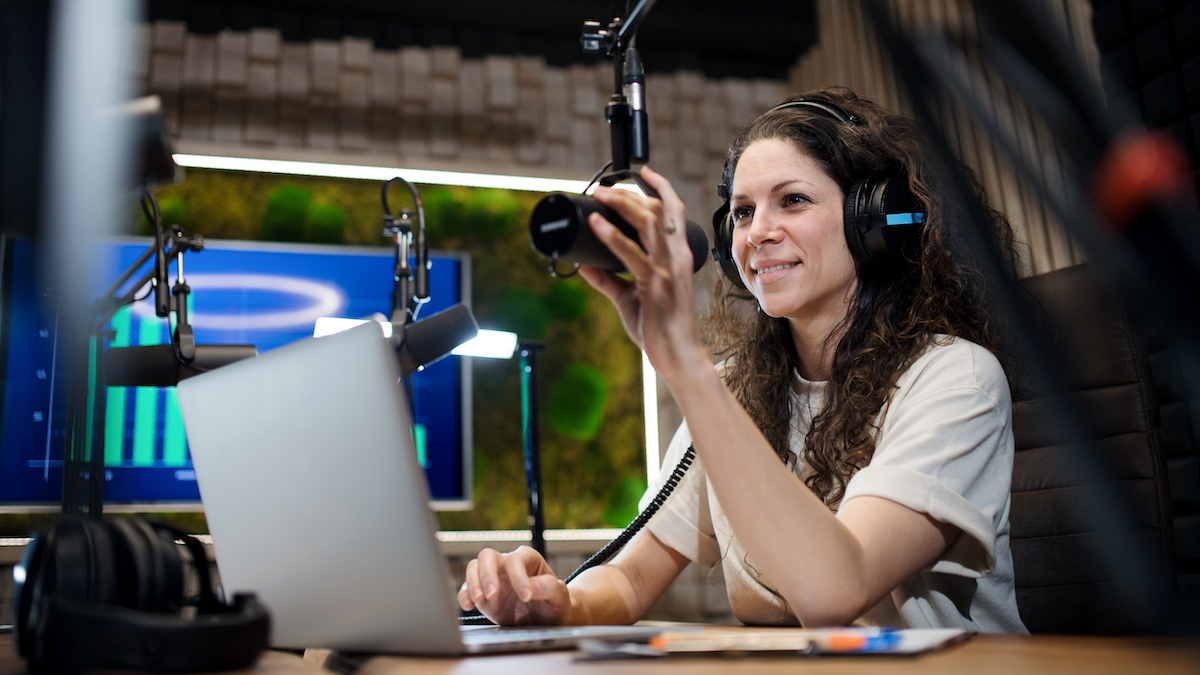
While microphones all largely carry out the same function, there are some key differences which suit certain microphone types better to specific applications than others. As such, when researching podcast mics - whether it’s to replace an old studio workhorse or as your first foray into this world - it can help to ask yourself the following questions:
1. What’s your recording environment?
MusicRadar's got your back
First and foremost, where do you intend to record your podcast? Are you going to be in a well-treated acoustic space? Or are you going to be recording somewhere there's a lot of additional noise? The environment you're in will have a significant impact on the character of the audio captures you achieve, and hence should determine the type of microphone you ultimately choose.
If you're not in an ideal recording space, then you should lean towards using a dynamic microphone. Dynamic mics have excellent noise rejection capabilities, making them great if you're working in an environment where there's background noise, or you have a room that's overly echoey.
If you have a good space to work in that's well treated and quiet, then go for a condenser microphone. A condenser mic will deliver better quality to your spoken word, but bear in mind it will pick up a lot of the room noise around you too.
2. What’s your podcast setup?
On a similar note to recording environment, the makeup of your podcast production can inform the viability of certain microphones over others. If you have more than one other person in the room with you, you’ll want a dynamic mic to reduce noise from movement; if you have more than one guest, you’ll want a microphone with a polar pattern that rejects sound from the right places. In a round-table podcast environment, supercardioid microphones work better owing to the diagonality of their null points; if it’s you opposite another person, a cardioid microphone would be better for rejecting any sound behind it.
3. Do you need USB or XLR connectivity?
XLR is a three-pin connector standard for microphones, and one which has stood for decades. Most studio-quality microphones are XLR microphones, and require a suitable audio interface in order to work with your computer. There’s a bit more of a learning curve for beginners, but the results (with practice) are often near-broadcast quality out of the gate.
USB podcasting microphones, meanwhile, are effectively plug-and-play devices that don’t need any additional hardware to work with your computer, phone or tablet. This makes them an excellent prospect for beginner podcasters or those without the budget to spend on extra devices like an audio interface.
Which you plump for depends on a few things, from your budget to the amount of time you’re willing to spend genning up on audio engineering principles. Accessible as the USB microphone is, it can also be limiting for larger productions; an XLR setup is ideal if you're wanting multiple guests, and need more than one microphone recording at the same time.
4. Do you want built-in effects?
Depending on the level of your production, you may or may not benefit from the bundled-in benefits of certain microphones. Some microphones are modelling microphones, with onboard dynamic modelling tech that simulates the sound profile of different (and expensive) studio microphones; others pack in clever digital signal processing to help you attain broadcast-quality captures without an audio engineering degree. If you’ve already invested in plugins for your DAW, these features won’t be as much of a selling point to you.
5. What accessories do you need?
Finally, and as well as the mic itself, it will pay dividends to consider what accessories you might want alongside it. Many microphones come with basic accessories, like a USB cable or a mount for a mic stand, but some will go a step further; if you don’t already have all the pieces of the puzzle, a microphone with a bundled kit (including a pop shield for plosives, and a desktop stand for immediate set-up) could save you some serious headaches in getting started quick.
If you're going for a USB mic then your cabling will likely be covered, but for those opting to go for an XLR mic, you'll need a microphone cable. You might also need an audio interface for streaming too if you don't already have one. If you're worried about spend, you can get some excellent audio interfaces under $200/£200 nowadays, so you don't have to splurge to get up and running.
FAQs
Which microphone type is best for podcasting?
There are an increasing number of microphones marketed as being dedicated podcast microphones; underneath the buzzwords you’ll find they’re almost exclusively condensers or dynamics, and either XLR or USB connected. Condenser mics are perhaps better suited to studio locations as they bring out a richness in voices, however the trade-off is that they can be more sensitive to ambient noise. You’ll also need to factor in 48V phantom power if you’re using an XLR condenser; USB versions take care of this via bus power through the USB cable.
Dynamic microphones, on the other hand, are a bit livelier, and are ideal for outdoor recording or in environments with lots of loud noise. They also don’t require any external power, so can be plugged into any mixer or audio interface and will work immediately.
XLR vs USB microphones – which is best for podcasting?
Choosing between XLR- and USB-connected mics is effectively a choice between quality and convenience. USB mics are predominantly plug and play, and require very little knowledge of sound. You plug it into your laptop, hit record in your podcast recording software of choice and you're good to go. You’ll tend to find decent quality USB microphones are inexpensive enough to make them a viable first choice for newcomers, and their inherent simplicity makes them an attractive choice for many different kinds of setup.
What might potentially cause an issue is if you’re a Windows PC user wanting to use multiple USB mics at once. For all that it does well, Windows isn’t brilliant at handling multiple audio sources over USB. Mac users have no such problems, thanks to them being able to create ‘aggregate devices’ which combine multiple audio interfaces into one, but no such joy if you’re on Windows. That being said, for small-scale pods requiring only one voice, you can make use of the headphone socket found on most USB mics to monitor while you record.
For more advanced scenarios, you'll want to use mics with an XLR connector, and either a podcast mixer or audio interface. This enables you to use multiple microphones at the same time, with tactile control over sound levels. Whether the recorded audio is of a higher quality depends largely on the microphone itself, and the mixer or audio interface, but the potential is certainly there. Going down the XLR microphone route does mean you’ll need extra equipment however, so if you’re aiming to keep your setup lean and cabling down to a minimum, then my recommendation would be to go down the USB route.
For those budding podcasters just starting out, follow our guidance on how to start a podcast. And if you intend to make a career out of podcasting, here's some guidance on how to make money from podcasting. Good luck!
What are the different types of microphone pickup patterns
A mic’s pickup pattern, or polar pattern, tells you which directions the mic captures sound from - and also, where its ‘blind spots’ for sound are. Most microphones you’ll encounter have a cardioid pattern, which means the mic will collect sound from broadly in front of it, and reject most sound from behind it. This is a great choice for solo recording, or for recording opposite a guest.
If you want to record multiple people with the same mic, an omnidirectional polar pattern would suit better, as omni mics hear in every direction. In situations where you have multiple guests each with their own microphone, a supercardioid pattern may be your best bet; supercardioids are a tighter cardioid pattern, but with two blind spots at 45 degrees behind each side; these can reject noise from adjacent guests or hosts, ensuring a cleaner capture of your own voice.
Which are the best podcasting microphone brands?
Most pro microphone brands have stepped into the podcasting mic world in recent years - understandable considering the massive rise in people podcasting and streaming. Thanks to a sterling reputation in the pro audio world, you can rely on the usual suspects like Shure, Audio-Technica, Sontronics and Rode to produce gear you can trust.
Another big player in the podcast microphone world is Blue Microphones, now owned by Logitech. They first emerged in 1995 and are best known in the podcasting and streaming world for the Yeti microphone range - of which there are currently four models. The Yeti was first launched in 2009 and has become a staple of the reliable, affordable podcast mic sector.
IK Multimedia is another brand who has built a very strong reputation for quality audio gear at affordable prices.
How much should I spend on a podcasting microphone?
Investing in one of the best podcasting microphones doesn’t need to break the bank. The most expensive mic we recommend in this guide is the Shure SM7dB, which comes in at around the $/£499 mark. That’s no small investment, but you get what you pay for and both the audio and build quality of this podcast mic speaks for itself. If you’re serious about podcasting (or if you need a great vocal mic, for that matter), you should think seriously about buying the SM7dB.
That said, our top pick in this guide is another from Shure, the hybrid XLR/USB-equipped MV7+. For this one you’ll pay around $249/£199 and the results will blow you away. If this is still beyond the top end of your budget, anywhere between $/£100 and $/£200 will bag you a budget podcasting microphone capable of pro quality results. It’ll be no frills, but it will reliably get the job done.
How do I mount my podcasting mic?
Most of the best podcasting mics will come with some kind of desk tripod on which you can mount them. That said, the smart money is on using a more robust mic stand or - better still - a boom arm, for solid and adjustable mic-holding. Almost all microphone mounts use the same thread standard, so there’s little chance of buying an incompatible stand (unless you buy a camera stand by accident…).
What do I need to get started with my podcast?
A podcast mic isn’t necessarily all you need to start a podcast. You can absolutely get by with a USB podcast mic and a dream, but a few extra accessories at the very least will help you level up your game. For instance, you'll need a way to listen back to yourself either during or after recording; most would opt for a pair of studio headphones to accomplish this. For something a little more targeted, you might look for the best-rated podcast headphones online.
If you’re wanting an XLR microphone, or a set of XLR microphones to record multiple guests with, then you’ll need an audio interface with at least the same number of XLR inputs as your intended microphone count. For those who are looking to go big or go home, investing in a dedicated podcast mixer can really help beef up the production quality of your 'cast. A mixer lets you balance the levels of multiple microphones, add on-the-fly effects, switch cameras, and loads of other cool tricks that will keep things flowing smoothly. However many microphones you want, you’ll need that many cables and mic stands!
Finally, it's worth thinking about production and publishing. If you're planning on doing a series of podcasts, then an external hard drive is another good shout for archiving your captures and backing up works-in-progress. Don’t forget, too, that you’ll need a podcast host in order for your podcast to be listenable by anyone else!
How do I get a good recording with a podcasting mic?
Getting a good capture for your podcast requires three things: a good space to record in (or knowledge of your recording space); good microphone placement; and good gain staging. The room you record in has a serious impact on the sound of your recording, particularly if it is a ‘lively’ room with lots of reflections; a dynamic microphone helps reduce the impact of the space.
Microphone placement is key for getting a usable recording. Too close to your mouth and it’ll pick up saliva noises and breathing, and struggle with plosive sounds; too far, and your voice will sound quiet and weedy against the background noise of the space and your equipment. To avoid nasal sounds and breathing noise, pitch the mic just below your mouth, pointing up at the roof of your mouth from at least 6” away. Here, you’ll benefit the most from a controlled sound without overwhelming boom or mastication sounds.
Gain staging is the final piece of the puzzle, and is something you set before you press record. Given the high fidelity of today’s digital recording media, you don’t need to worry too much about aiming for a specific volume level. Just make sure you test your microphone by talking at your loudest, and ensuring the signal isn’t clipping in your microphone or in your software.
Glossary of key terms
If you're finding the tech lingo in this guide a little confusing, then this is the place to be. Here I've curated all of the common terms used throughout this guide, and given them concise definitions to help you understand the category of podcast mics better.
Audio interface
An audio interface is a device that converts analogue audio signals into digital ones so your computer can understand them, and also converts digital signals from your computer back into audio signals so you can hear them.
Cardioid
Cardioid is a type of microphone polar pattern. Cardioid microphones pick up sound from broadly in front of them, and broadly reject sound from behind them. Most podcast mics capture sound from the front to prevent picking up any background noise.
Clipping
Clipping is what happens when a sound overwhelms a part of your signal chain. If you set your microphone’s preamp too high for a sound, the signal level will become distorted; it is called clipping because the peaks of the sound’s waveform are clipped by the ‘ceiling’ of the preamp.
Condenser mic
A condenser microphone is a type of microphone with high sensitivity, used to capture detail. They excel on quieter sound sources in well-treated rooms. Unlike dynamic microphones, XLR condenser microphones require phantom power to operate.
DAW
DAW stands for Digital Audio Workstation; it is a type of software in which you can manage and process audio files, including the putting-together of a podcast.
Diaphragm
A microphone’s diaphragm is the part which ‘listens’ to sound sources. The diaphragm vibrates sympathetically with the sound it receives, converting the kinetic energy of the moving air into electrical signals.
DSP
DSP stands for Digital Signal Processing; some microphones utilise DSP to alter the character of your audio before it gets recorded.
Dynamic mic
A dynamic microphone is a type of microphone suited to a wide variety of sound sources; they are typically excellent directional microphones, and can handle signals with high dynamics (fluctuations between loud and quiet) well. They work passively, meaning they require no power to translate sound into an electrical audio signal.
Gain
Gain describes the amplification of a microphone’s audio signal, whether by an onboard preamp or by successive stages of preamplification using an audio interface and DAW. Too much gain can cause distortion in the form of clipping, while too little can result in a weak signal with a low signal-to-noise ratio.
High Pass Filter (HPF)
A high-pass filter, also known as a low-cut filter, removes low end information from a captured sound, enabling you to control rumble or bassy voices.
Latency
Latency is the delay you experience between the capture of a sound by your microphone and its arrival in your computer, or back in your headphones after digital processing. It is a result of the time required for the signal to pass through your equipment, get converted, processed and converted again into a signal. Latency is why many USB podcasting mics provide a built-in headphone monitor, so you can hear how you sound immediately and with no latency.
Mic preamp
A mic preamp is a circuit that boosts microphone signals in order to make them more audible.
Omnidirectional
Omnidirectional, or omni, is a type of microphone pickup pattern that captures sound from all directions.
Phantom power (+48V)
Phantom power, or P48, is a power requirement for condenser microphones, usually sent to the microphone through its XLR connection. USB condenser microphones use USB bus power and internal circuitry to source their own phantom power.
Pickup pattern (polar pattern)
A microphone’s polar pattern describes the directions from which it can ‘hear’ sounds. Many things impact a microphone’s polar pattern, from the diaphragm to the shape of the basket in which it is held. Polar patterns also tell you where a microphone’s blind spots are, which is useful for podcasting in loud rooms or with guests.
Plosive
A plosive is a blast of air caused by certain letters in words. Letters like 'p', 'b', 't' and others can cause these. Plosives can impact the quality of the vocal capture you’re trying to get, but can be managed using pop filters or good microphone placement.
Pop filter
A pop filter is a fabric or mesh shield placed in front of a microphone, that disperses high-SPL transients like plosives.
Shock mount
A shock mount is a type of microphone holder that isolates the microphone from knocks or vibrations, which would otherwise be picked up by the diaphragm.
Sibilance
Sibilance is the harsh sound you hear from words containing 's' or 'sh' sounds. Sibilance can be overrepresented in certain vocal recordings depending on microphone placement or audio processing; processing like EQ or de-essing can also be used to manage sibilance.
Signal-to-noise ratio
Signal-to-noise ratio describes the relationship between a captured sound and the background noise in a given audio recording. All audio hardware has a level of self-noise, on top of the noise inherent to the spaces in which you record; if you record a podcast with your preamp gain too low, you can end up with a high signal-to-noise ratio when you boost the resulting file up to a listenable volume.
SPL
SPL stands for Sound Pressure Level, and is measured in decibels. Some microphones are better at handling high-SPL sounds – like drum hits, or especially loud voices – than others.
Supercardioid
Supercardioid is a type of microphone polar pattern. Supercardioid microphones pick up audio from in front of them and partially from directly behind, rejecting sound from 45 degrees behind on either side. This type of polar pattern is popular in podcast settings with multiple guests, where adjacent speakers can be prevented from bleeding into each other’s microphones.
USB mic
A USB microphone is a type of microphone that plugs into your computer via USB cable; these microphones are all-in-one solutions that have their own built-in audio interface which converts analog audio into digital information for capture in your computer.
Windscreen
A windscreen is a foam shield placed over a microphone’s basket that helps reduce the effects of wind when recording outdoors.
XLR mic
XLR mics are microphones which connect to equipment using an XLR cable. This is the conventional standard for microphones in studio environments; such microphones require a separate audio interface to enable the translation of analog audio into digital information.
How we test podcasting microphones
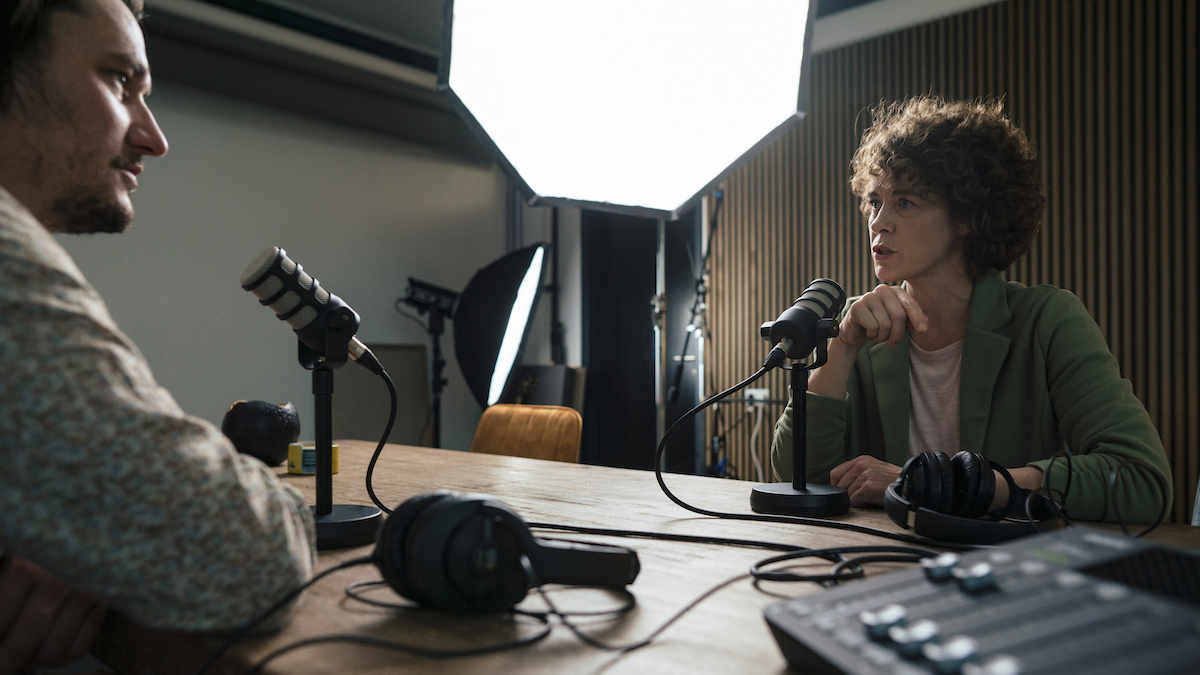
Testing the best podcast microphones means more than a quick "check one two" - with so many podcasting microphones on the market, we take our testing further to demonstrate the real-world situations you might find yourself in. As a former broadcast journalist, I'm familiar with the different requirements of a speech-focused microphone, and I try to bring that experience into every review.
When testing a podcasting microphone, we're looking for a few different things. Ease of use is important, for example, as is a low noise floor, i.e. whether the mic picks up low-frequency rumbling. This is because many podcasts are recorded in spaces that wouldn't normally fall into the 'studio' category. This could mean lounges, kitchens, cars or even outside in the local park, so our reviews must reflect this.
To test their prowess, I record various spoken word passages into the mic, recording them directly via USB or, if it's an XLR mic, into my audio interface (just a standard Focusrite Scarlett - nothing special). I try to keep consistency from one mic to the next, so the speech recordings themselves are the same - an advert-style voiceover, a broadcast-style news report and then some ad-hoc chatter to test out the dynamic ranges of each mic.
From there, Adobe Audition or Pro Tools allows me to view the recorded waveforms so I can see peaks and troughs, and even to analyse them via the spectral frequency display to see overall loudness hotspots. Put simply, a good microphone will require little in the way of post-production, whereas a cheaper, lower quality mic may require equalization, or compression adding before it can be considered acceptable.
As well as technical testing, I'm also looking at the physical unit itself. If it has buttons or knobs, do they turn or switch properly, or is there any wobble? Do the mic's connection points - USB or XLR - give me confidence they will last long into the future?
Then, of course, the price. This will likely be the main factor when it comes to choosing your new podcast microphone, but it's important to distinguish between the upfront cost you pay, and the value you'll get in the long term. Some mics, and mic brands, command a premium price so we try and establish why this is and if you're paying over the odds for the name on the box, or if that heritage and track record is genuinely worth the extra cash.
As with any studio equipment, there are countless ways in which you could end up using it out in the wild. Our reviews try to be as objective and rigorous as they can be, while also acknowledging that your own mileage may vary. It's not an exact science, but if it helps match you up with the perfect podcast microphone for your own needs then we've done our jobs here.
Read more about how we test music making gear and services at MusicRadar.
How we record our podcast mic demos
In addition to writing down our thoughts on each mic, we want you to hear them in action, so we've recorded an audio sample of each one in this guide. We use lots of writers in different locations, so while it's not always possible to get the exact same conditions for each audio demo, we take a great deal of care in ensuring that the same process is taken for each audio demo.
Every mic was recorded in a quiet (but untreated) space with the same cabling and settings used throughout. Each mic was connected, either via USB directly into a MacBook, or using an XLR cable into an audio interface Recordings were captured directly into Adobe Audition or Pro Tools and, other than trimming out the occasional pause or stutter, no further production, edits or effects were used. All sounds are clean, and direct from the mics themselves.
We also record the exact same Harvard sentences, which are phonetically balanced in order to test out the microphones. These sentences are used in research fields like telecommunications, speech, and acoustics, which makes them a great testbed for our own testing.
Why trust us?
✔️ 150+ microphones tested by us
✔️ More than 9,500 reviews on-site
✔️ 18 years of product testing
Since 2007 MusicRadar has been helping musicians of all kinds, whether they're guitarists, drummers, producers, keyboard players, podcasters or DJs. We've been testing music gear for a long time, and our team of highly experienced industry professionals collectively have over a century's worth of knowledge from real-world music-making.
MusicRadar has been the go-to place for musicians looking for the latest news, best gear reviews, and how-tos for 18 years and counting, irrespective of your particular instrument, or favourite music genre.
As well as providing the best online music content, MusicRadar also hosts content from stalwart magazine brands including Future Music, Computer Music, and eMusician. We receive three million visitors per month, making us the preeminent destination for music makers and lovers worldwide.
Meet the experts
Our writing team consists of many real life musicians, engineers, instrumentalists, and more, all with a huge amount of experience in the industry. Meet our team of expert gear reviewers:

Chris Corfield is a journalist with over 12 years of experience writing for some of the music world's biggest brands including Orange Amplification, MusicRadar, Guitar World, Total Guitar and Dawsons Music. Chris loves getting nerdy about everything from guitar and bass gear, to synths, podcasting microphones, DJ gear and music production hardware.

James Grimshaw is a freelance writer and music obsessive with over a decade of experience in music and audio writing. He's lent his audio-tech opinions (amongst others) to the likes of Guitar World, MusicRadar and the London Evening Standard – before which, he covered everything music and Leeds through his section-editorship of national e-magazine The State Of The Arts. When he isn't blasting esoteric noise-rock around the house, he's playing out with esoteric noise-rock bands in DIY venues across the country.
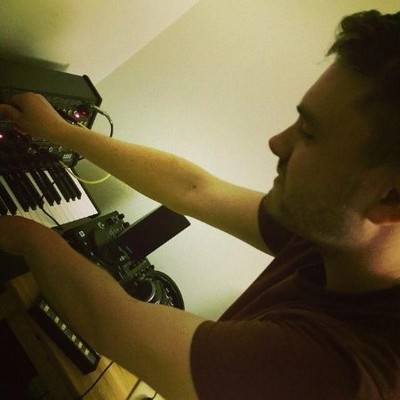
Si is the Music Technology Editor-in-Chief at MusicRadar and former Editor-in-Chief of Future Music, Computer Music, and Electronic Musician. He's been messing around with music tech in various forms for over two decades.

Matt has been recording bands since the mid-noughties, cutting his teeth with an SM58 clone and a copy of Cubase on Windows XP. Since then, he's used countless microphones to record music for bands across the UK, covering everything from djent to jazz. As a MusicRadar writer, Matt has reviewed over 50 different products, including guitars, amps, pedals, mics, and studio monitors.

Trevor Curwen has played guitar for several decades – he's also mimed it on the UK's Top of the Pops. Much of his working life, though, has been spent behind the mixing desk, during which time he has built up a solid collection of gear needed to cover just about any studio session.
Latest updates
23/10/25: We've updated the NT-USB entry to the NT-USB+ model at number 3 because it's a significant upgrade on the predecessor, which was already a mic we rated highly. We also added the Universal Audio SD-1 in at number 10 thanks to it being very close to another popular podcast mic, but at a more attractive price-point. Elsewhere, we've improved and added to our how to choose, FAQ and glossary sections, leaving no stone unturned in terms of arming you with the latest knowledge.
28/05/25: We've added the Audio Technica AT2040USB as the 'best budget' category based on recent testing and provided an audio demo. The product entries now have more specifications in order to help inform readers, and the spec comparison section has been updated accordingly.
03/03/25: We've add 'who is this mic for' sections alongside each of our microphone choices, so it's even clearer the application for each mic. We also compiled a handy spec comparison table so you can get a quick look at each mic side-by-side.
Want all the hottest music and gear news, reviews, deals, features and more, direct to your inbox? Sign up here.
Chris Corfield is a journalist with over 12 years of experience writing for some of the music world's biggest brands including Orange Amplification, MusicRadar, Guitar World, Total Guitar and Dawsons Music. Chris loves getting nerdy about everything from guitar and bass gear, to synths, microphones, DJ gear and music production hardware.
- Matt McCrackenJunior Deals Writer
- James GrimshawFreelance writer